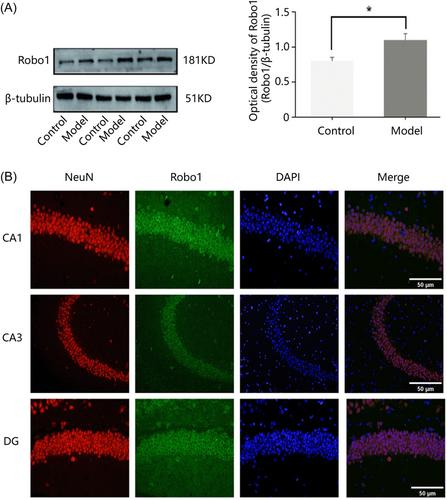Mechanism of Robo1 in the pentylenetetrazol-kindled epilepsy mouse model
Abstract
The neural network hypothesis is one of the important pathogenesis of drug-resistant epilepsy. Axons guide molecules through synaptic remodeling and brain tissue remodeling, which may result in the formation of abnormal neural networks. Therefore, axon guidance plays a crucial role in disease progression. However, although Robo1 is one of the important components of axon guidance, the role of Robo1 in epilepsy remains unclear. In this study, we aimed to explore the mechanism of Robo1 in epilepsy. Male adult C57BL/6 mice were intraperitoneally injected with pentylenetetrazol to establish an epilepsy model. Lentivirus (LV) was given via intracranial injection 2 weeks before pentylenetetrazol injection. Different expressions of Robo1 between the control group, LV-mediated Robo1 short hairpin RNA group, empty vector control LV group, and normal saline group were analyzed using Western blot, immunofluorescence staining, Golgi staining, and video monitoring. Robo1 was increased in the hippocampus in the pentylenetetrazol-induced epilepsy mouse model; lentiviral Robo1 knockdown prolonged the latency of seizure and reduced the seizure grade in mice and resulted in a decrease in dendritic spine density, while the number of mature dendritic spines was maintained. We speculate that Robo1 has been implicated in the development and progression of epilepsy through its effects on dendritic spine morphology and density. Epileptic mice with Robo1 knockdown virus intervention had lower seizure grade and longer latency. Follow-up findings suggest that Robo1 may modulate seizures by affecting dendritic spine density and morphology. Downregulation of Robo1 may negatively regulate epileptogenesis by decreasing the density of dendritic spines and maintaining a greater number of mature dendritic spines.


 求助内容:
求助内容: 应助结果提醒方式:
应助结果提醒方式:


